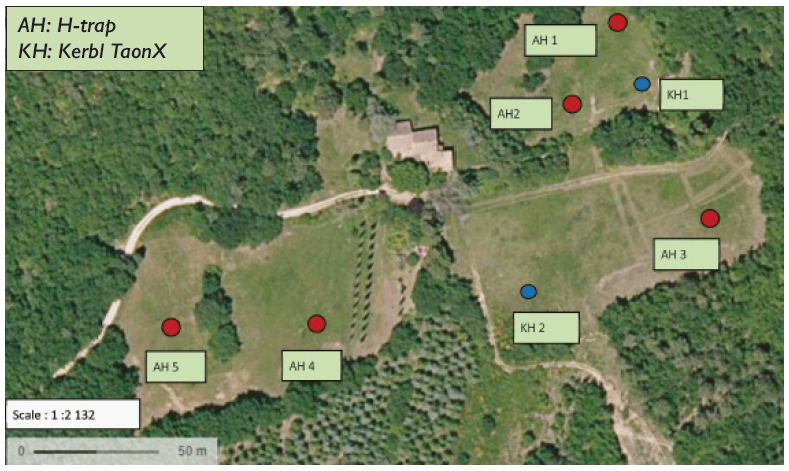The H-Trap Professional Horse Fly Trap System continues to be the first choice amongst researchers studying tabanids (aka horse flies) around the world. A newly published study entitled “Seasonal abundance of Tabanidae (Diptera) on a farm in southern France” recently appeared in the scientific publication, Agriculture and Natural Resources (54 (2020) 158-164).
The authors Azza Ferjani, Lucas Etienne, and Gérard Duvallet conducted the study using 7 H-Traps on a farm near Montélima in southern France. The study spanned 21 weeks from May to September 2017, and it was the first time that this region has collected data on the phenology and abundance of horseflies. In total, the traps collected 54,618 specimens, of those, the researchers identified 19 species. The authors wrote, “The phenology or seasonal activity patterns of hematophagous insects such as the Tabanidae could help to prevent stress and pathogen transmission during peaks of abundance through the implementation of proper control strategies.”
In the published paper, the researchers also indicated that they chose the H-Traps because in previous comparisons on testing and efficiency at this farm near the village of Allan, the H-Traps “gave the best results in terms of attractivity (number of captured tabanids) and specificity (very few non-target fauna)” compared to other commercial and government surveillance traps such as the Nzi trap, Vavoua trap, and sticky blue screen.
This study received financial support from the French National Research Agency, under the FlyScreen project.

Fig. 2 A map showing locations of Traps on the farm site, where AH-1–AH-5 = H-Traps and KH-1 and KH-2 = Kerbl®
TaonX (Image from Google Earth). (Courtesy of Gérard Duvallet and Alcochem)

